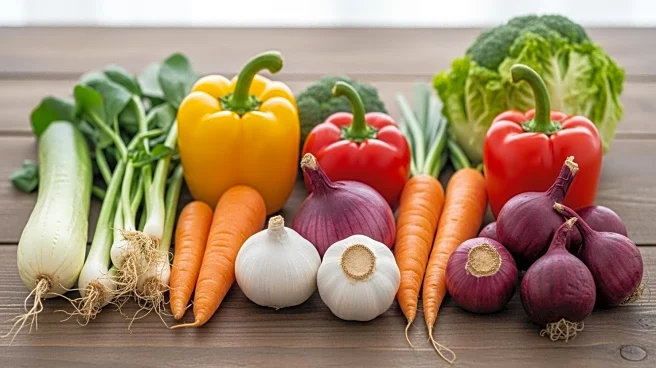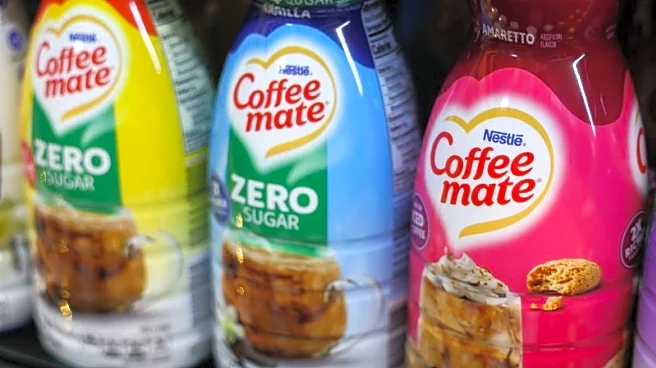What's Happening?
Campbell's has announced a significant change in its product formulation by committing to remove all artificial colors from its food and beverage products by August 2026. This decision comes in response to a call from Health and Human Services Secretary Robert F. Kennedy Jr., who urged food manufacturers to eliminate synthetic dyes by 2027 due to potential health concerns. Campbell's, known for its iconic red and white label soups, also owns brands like V8, Lance, Archway, Jay's, and Stella D'oro. The company plans to use natural color sources such as annatto and purple carrot juice concentrate to maintain the visual appeal of its products. This move aligns with similar initiatives by other major food companies like Nestle, Kraft Heinz, and General Mills, which have also announced plans to phase out synthetic dyes.
Why It's Important?
The removal of artificial colors from Campbell's products is a significant step in addressing consumer health concerns and reflects a broader industry trend towards cleaner labeling and natural ingredients. This change is likely to impact consumer perceptions and purchasing decisions, as more individuals become aware of the potential risks associated with synthetic dyes. By leading the charge in this transition, Campbell's may enhance its brand image and consumer trust, potentially increasing its market share. The move also sets a precedent for other companies to follow suit, potentially leading to widespread changes in food manufacturing practices and regulations.
What's Next?
Campbell's will continue to explore natural alternatives to artificial colors, ensuring that its products maintain their signature appearance without compromising on quality or safety. As the deadline approaches, the company may face logistical challenges in sourcing and integrating natural dyes across its diverse product range. Additionally, consumer feedback and market reactions will likely influence the pace and scope of these changes. Other food manufacturers may accelerate their own timelines to remain competitive and align with evolving consumer expectations.












